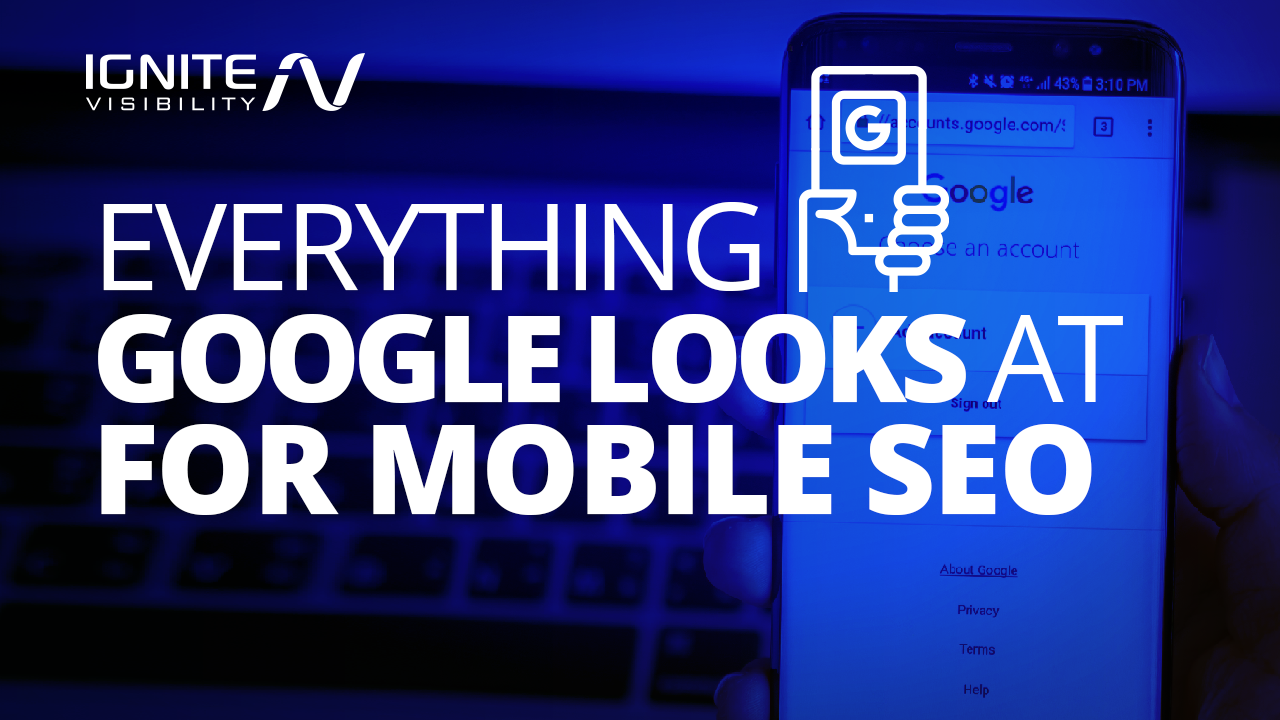
Currently, 92% of smartphone users access the internet from their mobile device and roughly three-quarters of all web traffic runs through Google. So naturally, it makes sense for Google to place a stronger emphasis on mobile SEO.
With mobile search rankings becoming more important than ever, your site needs to be intuitive, easy to navigate, and ultimately provide a seamless experience for users.
In this guide, we’ve created a comprehensive checklist of everything you need to know to drive your business growth and optimize your site for mobile SEO.
What We’ll Cover:
Opt for a Responsive Design
Websites that are poorly designed often deter customers from placing orders or interacting with your content. This negatively impacts its overall performance.
The best way to enhance the user experience is with a responsive website design that automatically adjusts to accommodate all mobile device screen sizes.
With a responsive design, your site will be more appealing in Google’s eyes and attract and maintain more website visitors.
There won’t be a need for horizontal scrolling, which Google says to avoid. You’ll provide mobile users with a simpler means to navigate your site without having to fight improperly configured page widths.

Check Your Loading Speed
Website loading speed is critical to mobile SEO. Users want answers fast and without delay.
But, you can’t simply optimize your desktop site with the expectation that your mobile site speed will follow.
If your site takes longer than three seconds to load, you’ll likely miss out on a ton of traffic and customers.
To combat this, Google recommends that your site should load in under one second for mobile users.
Since this can be challenging to pull off on your own, Google offers various tools like PageSpeed Insights to ensure it loads lighting fast.
Stick with One URL to Avoid Errors
Although you can configure your mobile site to have different URLs for different devices, Google advises that you only use one. “Google recommends webmasters follow the industry best practices of using responsive web design, namely serving the same HTML for all devices.”
Plus, it’s just easier to have a site that services a single URL version to users regardless of device to avoid redirect errors.
Redirects on mobile devices are still a huge headache, but they will be avoided by following Google’s recommendation for a one-URL site. This will also help reduce 404 errors to further promote the right content to be available to mobile users at all times.
By avoiding irrelevant cross links that can lead to a mobile 404, check to make sure all of your links point to the correct page.
If you decide not to go responsive, there are two other options that have just as much potential to rank well, when properly implemented. Check Google’s mobile configuration guide to make sure you are set up correctly.
Customize Your Software
Certain websites using extended software packages, like Flash or pop-ups, won’t be compatible with mobile websites and will hurt your site’s load time and performance. Google suggests you avoid or customize any third-party software that’s going to slow your load time or make your site difficult to use. You don’t want a decrease in mobile ranking.
Google recommends you use HTML5 standard tags for images and animations to be properly displayed on mobile devices. To promote usage for all devices, check your load time with Google PageSpeed Insights to discover any areas that may be slowing your performance.

Promote Navigation with Proper Text and Buttons
A key aspect of a mobile site’s navigation and function involves font size, links, and buttons. Google recommends you use an appropriate font size so users don’t have to zoom in to read content clearly.
In addition, Google encourages all links and website buttons to be properly spaced to avoid accidentally hitting the wrong option.
When setting the width for navigation, always design to accommodate larger fingers. You can verify all of this is correct by looking at the Google usability reports in Webmaster Tools.
Don’t Block JavaScript, CSS, or Image Files
To properly index your site, Google needs to be able to see your website like the average user. So don’t block Googlebot’s access to JavaScript, CSS, or image files. By disallowing crawling of these areas, it will hurt how well Google is able to index your site.
To ensure these areas are properly crawled, use the “Fetch as Google” feature in Google Webmaster Tools, test your robots.txt, and test your site with the Mobile-Friendly Test tool.
Fine-Tune Your Mobile Apps
While it may seem like only larger enterprises can afford creating custom-built apps, think again.
New tools have come about and drastically reduced the costs associated with developing simple, yet effective mobile apps.
Not to mention, they deliver value to customers by providing them with on-hand information about your brand.
In addition to mobile usability, Google also uses indexed apps as a ranking factor for users who have the app installed and are signed in.
With 90% of mobile users spending their time on mobile apps, you want to ensure your apps are mobile ready to be properly indexed because you’re likely to start seeing apps displayed higher in search results.
Google recommends you use a simple HTML banner to promote your app that’s in line with your page content, and then support the app with the native browser.

Optimize Your Mobile Site
Although you’ll be working with less screen space, you don’t have to compromise your content. Strive to create killer content, and don’t forget to optimize the titles and meta descriptions.
And remember that mobile searches are local by nature, so be sure to use local elements to optimize for local search. These elements include your name, address, and phone number.
A Google study found that 75% of users who searched for something locally ended up visiting a related business within 24 hours of their search.
Test Your Mobile Performance
If you’re unsure about your site’s mobile SEO performance, Google offers the Mobile Friendly Test Tool to quickly scan for errors that may hurt your site’s performance or ranking. For a mobile-friendly site, Google recommends:
- Avoiding software that’s incompatible with mobile devices.
- Use easy-to-read text that doesn’t require zooming.
- Make content fixed to screen size to avoid horizontal scrolling.
- Use proper spacing between links and buttons for easy navigation.
- Make sure your mobile site loads as quickly as possible.
By running your website through this handy testing tool, you’ll quickly find areas to address and learn exactly what you need to do to boost your mobile authority.
Wrapping Up
With Google experimenting with mobile device usage over the past few years, it’a no surprise that Google has made the shift to mobile ranking factors.
Let’s face it—everyone is always on their phone, which is causing a transformation in SEO. This transformation is only going to continue to expand. This means the world of SEO as we’ve come to know isn’t going to be the same.
As technology continues to take over our lives and how we use it, Google is going to continue to push to meet society’s expectations when using the internet.
Now is the time to make sure you are 100% mobile SEO ready.
